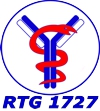associated TP32: Characterization of cryptic antinuclear autoantibodies target antigens
Antinuclear autoantibodies (ANA) are specific markers of various autoimmune diseases. They are most frequently associated with autoimmune connective tissue disorders such as systemic lupus erythematosus (SLE) or primary system sclerosis. In addition, they are also used in autoimmune liver diseases and many others, part of which are not superficially associated with autoimmune processes. Some of the ANAs have high clinical specificities for the particular disease, for example, antibodies to double-stranded deoxyribonucleic acid can be specifically detected in patients with SLE, whereas antibodies against the nuclear membrane protein gp210 are closely associated with primary biliary cirrhosis.
The most comprehensive screening system for ANA is the indirect immunofluorescence assay (IFA) with the human epithelial cell line HEp-2 as substrate. In the standardized use of HEp-2 in the serological diagnostic laboratory, unexplained ANA reaction patterns occur regularly. The importance of such findings is difficult to evaluate, as studies on clinical significance cannot be performed by the lack of appropriate monospecific tests. The elucidation of the reaction patterns is therefore of great interest to close this gap.
My PhD project, a continuation of my master thesis, aims to identify the novel ANA target antigens that are responsible for the unexplained ANA reaction patterns in autoimmune diseases. By implementing the methodologies already established in my master thesis, I hope to discover additional unknown nuclear autoantigens. My work would include large-scale verification of the candidate antigens and determination of the prevalence of ANAs against these antigens in patients with autoimmune diseases. My goal is to develop a novel ANA-nuclear autoantigen system having high disease specificity. Detection of such novel ANAs along with their targets might provide opportunities for early and appropriate diagnosis in autoimmune diseases, thereby facilitating feasible therapeutics options.

- Projects
- Projects
- Associated projects
- associated TP 31 - C5a/C5aR1 axis in EBA
- associated TP 32 - Cryptic antinuclear autoantibodies
- associated TP 33 - Lymphocyte-derived factors in the effector phase...
- associated TP 34 - The Role of C5aR2 in the Pathogenesis of Pemphigoid Diseases
- associated TP 35 - The role of IgG glycosylation in the attenuation of anaphylactic reaction
- associated TP 36 - Effects of different vaccination strategies on the development of different glycosylated IgG antibodies
- MD projects
- Associated MD projects
- Concluded projects
Principal investigator(s)
Mentors


Ramona Miske Madeleine Scharf





